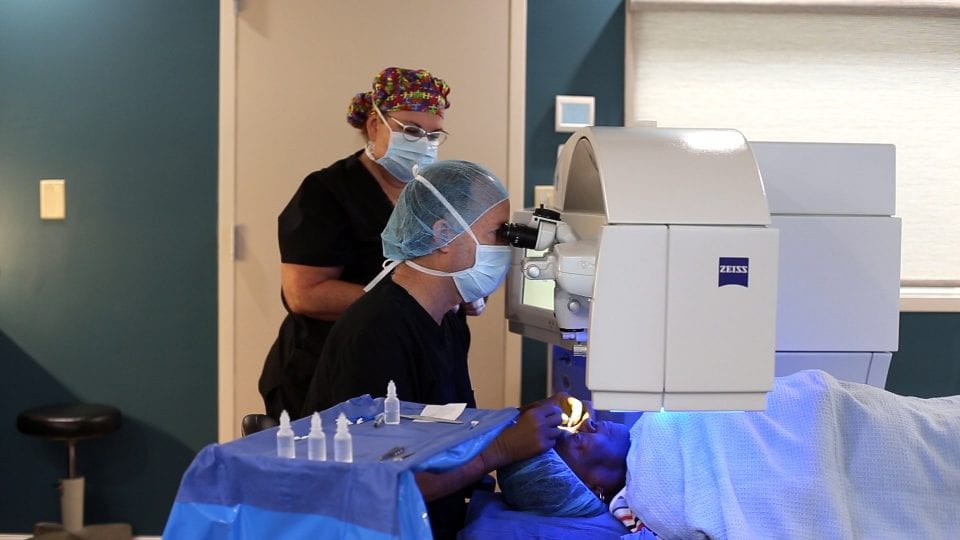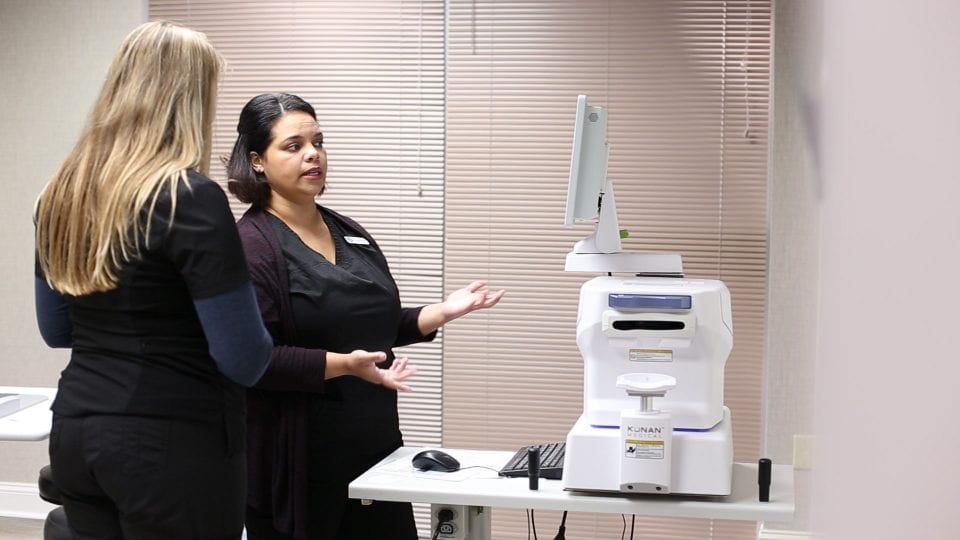
Discover LASIK & Beyond
Why our patients choose the #1 center for vision transformation

LASIK Patient Experience
As a patient of Griffin Eye Center, you’ll be surprised by the level of care and comfort you’ll receive here. It’s why our patients tell us “don’t change a thing!”
Understanding Laser Vision Correction
Laser vision correction is the name for the set of eye procedures that uses a laser to reshape your cornea in order to create clearer vision. There are three major laser vision correction treatments available in the U.S. today:
PRK: Photorefractive keratectomy
LASIK: Laser-assisted in situ keratomileusis
SMILE: Small incision lenticule extraction.
Photorefractive Keratectomy
In this procedure, the thin outer layer of the cornea is first gently removed. Then an advanced excimer laser is used to reshape the underlying cornea area. The result is a cornea that more accurately focuses light on the retina. A bandage contact lens is placed over the eye until the epithelium grows back.
• Longer recovery time with some recovery discomfort
• Similar vision results as LASIK and SMILE
• Minimal surgical risks
Laser-assisted In Situ Keratomileusis
In this procedure a precise flap is created on the surface of the cornea . Then an advanced excimer laser is used to reshape the underlying cornea area. The result is a cornea that more accurately focuses light on the retina
Today, doctors are able to create the LASIK flap in two ways. The first is using a handheld surgical device called a microkeratome. The second is using a fast and highly precise laser called a femtosecond laser. At Griffin Eye Center we use the latest technology of the Femtosecond laser.
• Thin flap
• Short recovery time with little recovery discomfort
• Similar vision results to PRK and SMILE
• Minimal surgical risks
Small Incision Lenticule Extraction
SMILE is the latest in laser vision correction for myopia (nearsightedness), providing LASIK-like visual outcomes in a minimally invasive procedure. In this procedure, a laser is used to create a thin, contact lens-shaped layer just beneath the surface of the eye and then a small opening through which that layer is removed, correcting your vision.
• Minimally invasive
• Short recovery time with potentially the least recovery discomfort
• Similar vision results to LASIK and PRK
• Gentle, comfortable patient experience
• Minimized surgical and dry eye risk
